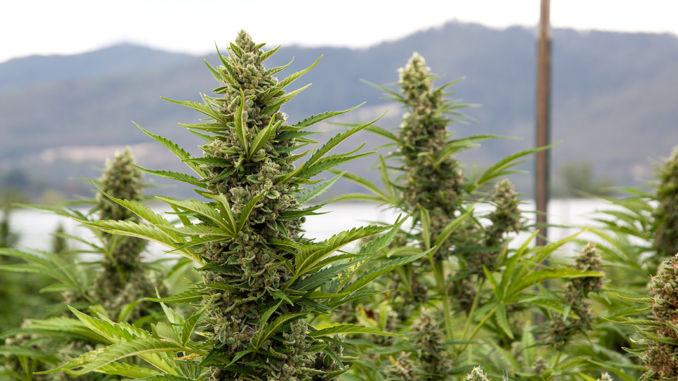
What makes cannabis cannabis? The aroma of flower and the physiological effects of consuming it come down largely to two things: cannabinoid ratios and terpene content. These twin factors go a long way toward shaping the user experience of a given product, and distinguishing it from myriad other options. But what is the source of these distinctions, whether sweeping or subtle? New research points to the importance of an oft-overlooked influence: cultivation.
Variations in terpene and cannabinoid profiles are typically chalked up to genetics. Individual cultivars, defined by parental inheritance, may be grouped into broad categories according to their genetic predisposition toward a particular dominant terpene – caryophyllene and limonene for “dessert” strains, ocimene for tropical/floral strains, and terpinolene for Jack/haze strains, to name a few – or cannabinoid profile – high-THC, high-CBD, or balanced THC–CBD.
While helpful, these cultivar/genetics-based classification systems obscure an important consideration: the conditions under which the actual plant is grown. To wit, a new study in the journal Molecules finds that clones with identical genetics can produce meaningfully different levels of both types of chemicals when grown “naturally” versus “artificially.” Other recent papers report similar findings under different lights at indoor grows.
Science now confirms what cannabis connoisseurs have argued for years as cultivation has become increasingly commercialized in legal markets: it’s not all nature; nurture matters, too.
A Cultivation Experiment
Published in January 2023, the Molecules1 study was performed by researchers at New York’s Columbia University along with the owners of three independent Northern California cannabis companies: John Casali of Humboldt’s Huckleberry Hill Farms; Tina Gordon of Humboldt’s Moon Made Farms; and Christine Skibola of Novato’s Cosmic View.
The authors cite as the impetus for their work the fact that “the vast majority of recent studies” on cannabis cultivation have been targeted toward improving efficiency and optimizing yield at indoor grows. Comparisons of outdoor- and indoor-grown cannabis are lacking in the literature because during prohibition it has been “difficult to grow cannabis outdoors under optimized conditions,” they write.
To learn more, the researchers grew six genetically identical commercial plants from two different cultivars, Red Velvet and Cheetah Piss, with three of each outside and three inside. The outdoor samples were grown in raised beds using a mixture of all-natural, “living” soil and composts in full sunlight. The indoor samples were grown under artificial light in a proprietary growth medium.
At harvest, the researchers selected flowers from the upper third of the plants with similar morphology and size. They then used gas chromatography with mass spectrometry (GC–MS) to evaluate terpene composition, and ultra-performance liquid chromatography plus mass spectrometry (UPLC–MS) to measure cannabinoids.
Terpene Diversity
Sure enough, the researchers discovered significant differences between indoor and outdoor samples on both fronts. With terpenes, the authors report finding “remarkably higher levels” of limonene, β-myrcene, β-caryophyllene, α-humulene, α-bergamotene, α-guaiene, and germacrene B in outdoor samples in both cultivars – but especially in Red Velvet, where the predominant outdoor terpene was a sesquiterpene called selina-diene, which is not among those required to be reported on by certified testing labs in California.
Outdoor cannabis samples had a greater diversity of terpenes compared to indoor cannabis from the same genetic stock.
“The main finding is that the outdoor cannabis samples had a greater diversity of terpenes and greater amounts of the ones that are present when compared to indoor cannabis from the same genetic stock,” the authors conclude. “Moreover, the outdoor samples have a greater preponderance of sesquiterpenes relative to the indoor samples.”
Findings around the primary “intrinsic” cannabinoids – those produced through biological pathways in the plant rather than through reactions in the environment – were a little more nuanced. Levels of cannabigerolic acid (CBGA) and cannabidiolic acid (CBDA) were relatively similar between indoor and outdoor plants, while cannabichromenic acid (CBCA) appeared slightly higher in the outdoor plants and tetrahydrocannabinolic acid (THCA) slightly lower, especially in Red Velvet. The outdoor plants did produce more tetrahydrocannabutolic acid (THCBA), a derivative of THCA that also possesses psychoactive properties and may elicit less anxiety.
A clearer difference between indoor and outdoor plants emerged relative to the oxidation and degradation products of the four primary cannabinoids – “extrinsic” cannabinoids such as cannabinol (CBN), cannabielsoic acid (CBEA), cannabicitran (CBT) isomer 1, and others – which were significantly amplified in the indoor samples. The authors aren’t sure how to explain this, but speculate that it could be due to reduced terpene production.
“One of the terpenes’ functions in the plant is to act as an antioxidant,” they write. “When grown indoors in the controlled environment, we found that the terpenes are not expressed in as high an amount. Therefore, there is less of an oxidation shield provided to the flowers. This could account for the increased levels of oxidized and degraded cannabinoids in indoor samples.”

Sunshine!
In any case, the study isn’t designed to parse every variable involved in cultivation. It doesn’t measure differences in nutrients or soil bacteria between the “living soil” and the “artificial growth media.” It doesn’t bother with temperature and humidity. Nor does it compare light quality or timing – just “sunlight” versus “artificial light” – even though we know from other recent research at indoor grows that variations in light spectra alone can impact the production of both terpenes and cannabinoids.23Furthermore, three of the authors represent companies that sell outdoor-grown cannabis or products made with it.
With all its limitations, the study still manages to make a fairly solid case that certain conditions associated with outdoor growing may be favorable to terpene production, protective of cannabinoid degradation, and inclined toward a slightly different, though not necessarily less desirable primary cannabinoid profile. And that’s probably enough to warrant asking of any given cannabis flower not only what its genetics are, but also how it was grown.
Nate Seltenrich, an independent science journalist based in the San Francisco Bay Area, covers a wide range of subjects including environmental health, neuroscience, and pharmacology. Copyright, Project CBD. May not be reprinted without permission.
Footnotes



Be the first to comment